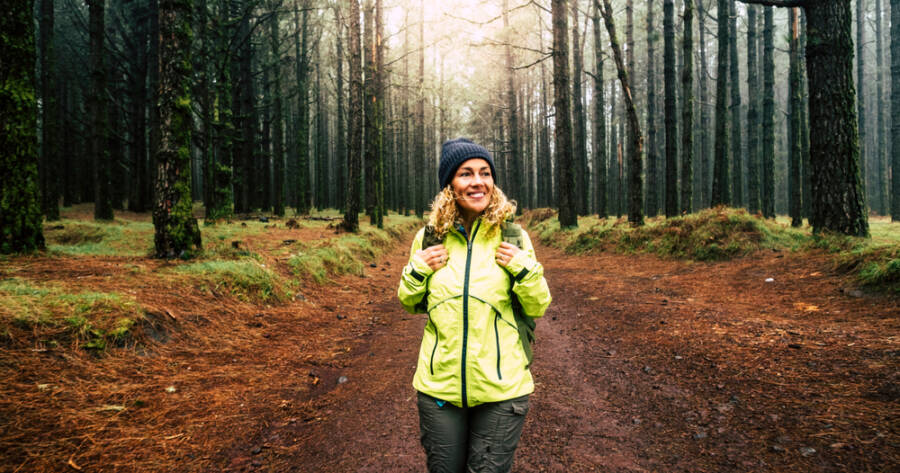Surrounded by the sounds of rustling leaves and birdsong, something in us quiets down. Forest bathing, or shinrin-yoku, is the simple yet powerful act of immersing yourself in a natural environment to calm your mind and recharge your body. Far from a hike or workout, this practice invites you to slow down and reconnect with nature and yourself. It’s not just peaceful–science says it might be deeply healing, too.
What Is Forest Bathing, Really?
Despite the name, forest bathing has nothing to do with water. Originating in Japan in the 1980s, shinrin-yoku translates to “forest bath,” referring to the act of soaking in the sights, sounds, and sensations of a wooded space. It’s about being, not doing—engaging your senses and fully experiencing nature without distractions.
Unlike a hike or a run, there’s no destination or goal. Forest bathing encourages mindfulness. You may sit still and observe sunlight on tree bark, or slowly walk a trail, noticing the crunch of leaves underfoot. It’s meditative, grounding, and increasingly embraced as a wellness practice around the world.
The Science Behind the Calm
Studies show that time spent in natural settings can lower cortisol levels, reduce blood pressure, and slow heart rate. Just a short walk through a green space can shift the nervous system from stress mode into a more relaxed, parasympathetic state.
In Japan, forest therapy is even prescribed by doctors. Patients are encouraged to spend time in specific forests known for their healing benefits. The scent of trees, fresh air, and reduced noise pollution all play a role in regulating the body’s stress response and improving overall mental health.
Benefits Beyond Stress Relief
While stress reduction is a major draw, forest bathing offers a ripple effect of health benefits. Spending mindful time outdoors can enhance focus, lift mood, and even boost creativity. For those struggling with burnout or screen fatigue, nature provides a powerful reset.
There’s also a growing connection between time in nature and immune support. Exposure to phytoncides—natural compounds released by trees—may increase the activity of natural killer (NK) cells, which help fight infection and disease. In a world filled with digital demands, this slow, sensory experience offers true replenishment.
How to Practice Forest Bathing Anywhere
You don’t need to live near a dense forest to experience the benefits of forest bathing. A local park, quiet garden, or tree-lined path can all serve as your personal retreat. The key is presence–leaving your phone behind, walking slowly, and engaging your senses one at a time.
Try starting with 20 minutes. Notice textures, smells, and sounds. What’s underfoot? What do you see when you look up? There’s no need to label or judge—just observe. The goal is to shift from “thinking” to “feeling,” allowing your body and mind to soften into the natural rhythm of the space around you.
Tips for Making It a Habit
Consistency is key. Like any wellness practice, the benefits of forest bathing grow with regular use. Start by blocking out quiet time in your weekly routine. Early mornings or late afternoons often offer the most solitude. Return to the same spot over time to deepen your connection with it.
You might also combine forest bathing with journaling or gentle breathwork to enhance the reflective experience. If you’re short on time, even five minutes outside during lunch or an evening stroll beneath trees can be restorative. Think of it as a nature reset button–a simple ritual with lasting impact.
Why It Might Be Exactly What You Need Right Now
We’re living in an always-on world, and our nervous systems feel the toll. Forest bathing offers an accessible, no-cost way to reconnect with nature, but also with ourselves. It doesn’t ask for effort, just presence. And in doing so, it gently reminds us that healing can be as simple as standing still beneath a tree.

